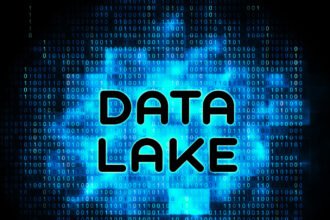The United States president, Barack Obama, wants a new supercomputer for the United States and signed an executive order for that purpose. The initiative is known as the NSCI (National Strategic Computing Initiative) with the goal of ending up with an exaflop supercomputer, which means a machine that is around thirty times faster than the current one.
The United States president, Barack Obama, wants a new supercomputer for the United States and signed an executive order for that purpose. The initiative is known as the NSCI (National Strategic Computing Initiative) with the goal of ending up with an exaflop supercomputer, which means a machine that is around thirty times faster than the current one.
This comes after Titan, the American supercomputer was relegated to second by Tianhe-2, the Chinese owned fastest supercomputer globally. With the executive order, the American president believes it’s time to bring the title back home. With that, the NSCI has now been given the mandate and responsibility of building the fastest supercomputer globally.
Multifaceted research
Together with National Science Foundation, the Energy and Defense Departments are expected to lead the supercomputer research until the high-performance machine has been developed. The technology, according to the president, will enhance areas ranging from cyber security to scientific discovery and economic competitiveness.
Critical machines
Supercomputers have been used for all kinds of purposes, from national security to the economic viability of the country. Scientists across the United States can also use the fastest supercomputer in doing research in any field, right from climate change to nuclear energy. As such, NSCI will be developing the exascale computer, the first in the world and over 30 times in speed of any computer in use today.
Once complete, the new supercomputer will be operating at one quintillion or 1 exaflop calculations for every second (which is basically 1,000,000,000,000,000,000 for each second). The fastest supercomputer, Tianhe-2, currently runs at 38.86 quadrillion, 33.86 petaflops or 38,860,000,000,000,000 per second calculations.
Increased power consumption
Titan, the United States top supercomputer and the second fastest, is located in Tennessee’s Oak Ridge National Lab and powered with 10 megawatts of energy. In contrast with a laptop, Titan consumes about 2000 more units of power. As such, the new supercomputer is expected to come with more software and hardware capability and will definitely need more power to run itself.
Once complete, the technology will come in handy for five critical agencies across the country, including: Homeland Security, NASA, NOAA, FBI and the National Institutes of Health. These agencies have the responsibility of testing and co-designing the machine right from the conception stages so that special requirements can be included to meet the agency’s’ unique needs.
Private sector also in the picture
In the executive order, President Obama elaborated that this national response requires a strategic and cohesive effort in the Federal Government with collaboration between the private and public sectors. Between the release of the order and 90 days, the National Strategic Computing Initiative must come up with a clear implementation plan. Even so, a completion date has not been offered but the group will be updating the implementation plan with the progress made every year for five years from the start of the project.
While Tianhe-2 is the fastest supercomputer globally, the United States exceeds all countries internationally as the country with the most supercomputers, but the fact that China is ahead of the pack could be the reason why the U.S. wants a more powerful machine.
To come up with 1,000 petaflops to create the first exaflop supercomputer will see a huge leap forward within the world of computing. It’s a huge power that any country would not mind bragging about. Of interest is the fact that creating 1,000 petaflops goes beyond knowing how a faster computer is built. Developers are also challenged by this development considering the fact that creating apps that can run on such a power is a massive challenge. This comes even as NCSI seeks to prioritize the making of supercomputers able to deal without a problem with data that keeps changing on a daily basis and rapidly at that.
A lot is still up in the air, but it clear that this supercomputer will affect both US policies and US industry.








